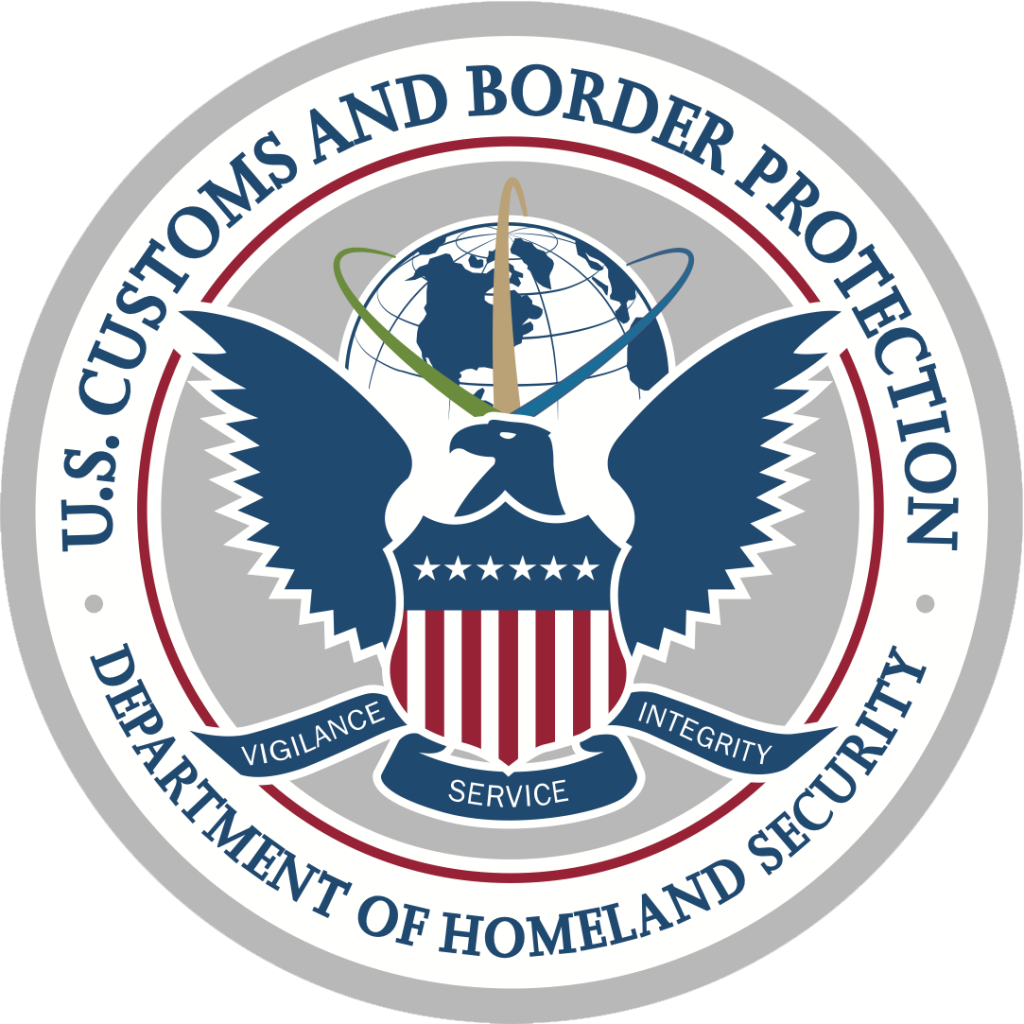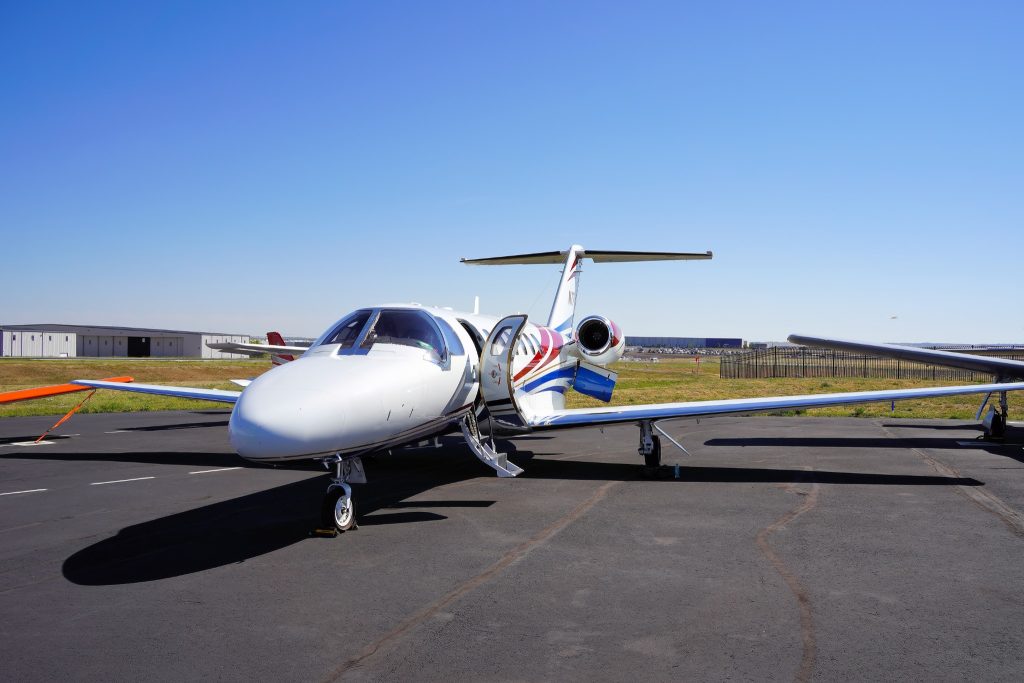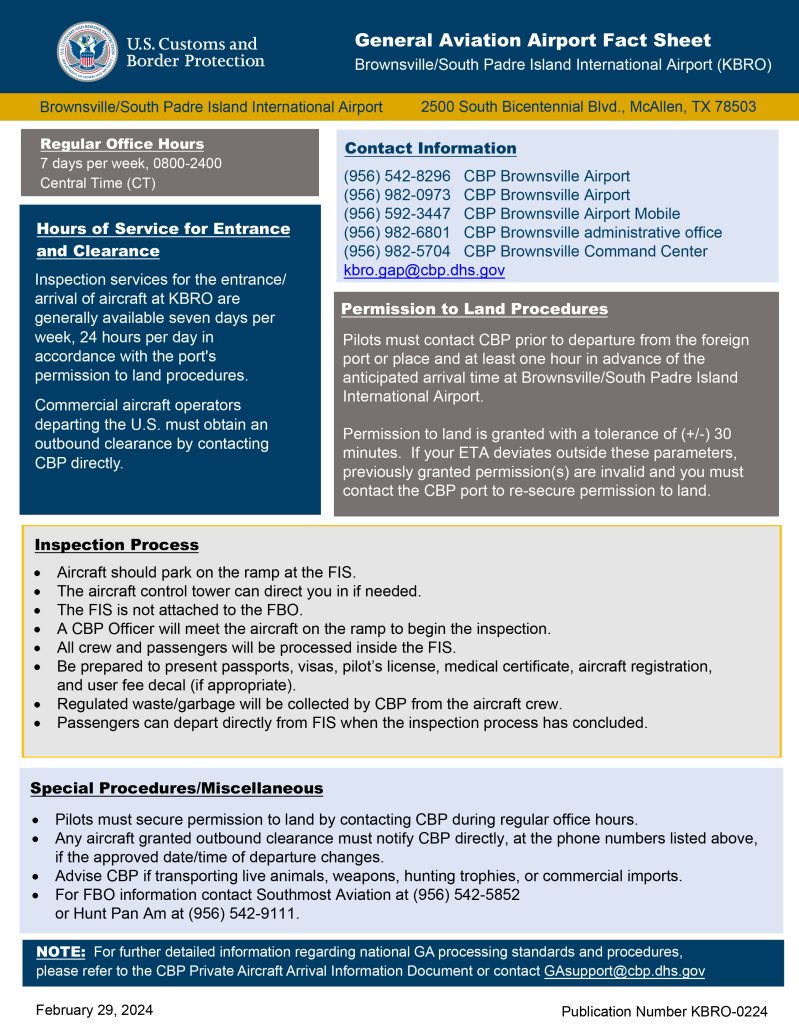by Rick Gardner, Director, CST Flight Services
How often do pilots get into trouble with CBP and what contributes to that situation? Historically, CBP penalties ran around 0.5% of arrivals – but recently there has been a rise in penalty cases, which is particularly concerning with the peak travel season now underway.

The main overall causes can be attributed to a failure (or failures) in what CBP calls the GA Processing Life Cycle, which consists of 4 parts: Feasibility Check, Pre-Arrival Processing, Arrival Processing and Post-Arrival Analysis. Let’s examine each of these.
Feasibility Check Errors – These are errors that should have been identified and prevented early in the trip planning process:
- Failing to obtain and understand the regulations as well as obtaining an Airport Fact Sheet for the CBP airport of entry with port-specific procedures and days/times of availability well in advance of the trip.
- Failing to ensure that everyone on the trip has a valid passport and identify any passengers who are from a Visa Waiver Country or require VISA’s.
- Will there be any minors traveling with one, or both, parents not accompanying them? A notarized letter from the non-traveling parent(s) authorizing the travel and identifying the guardian responsible for the minor is important.
- Failing to determine if there will be any pets, especially dogs, onboard the aircraft; and failure to obtain the necessary permits both from foreign countries as well as from the CDC in the USA.
- Failing to identify if CBP Form 4457 is required for any firearms or items of high value that could be considered an importation, or dutiable, upon their return to the USA.
- Failing to inquire if any passengers intend to travel with large sums of currency, jewelry, precious metals or instruments with a combined value of more than $10,000 USD.
- Failing to obtain a Border Overflight Exemption when planning to use an arrival airport in the USA that IS NOT a CBP Designated Airport.
- Failing to ensure that when using an APIS Portal/App that all fields have been updated with the correct names, passport information, addresses, CBP user fee Decal number, etc.
- Pilots not only have to worry about CBP regulations but foreign aviation regulations as well which are also constantly evolving. Oftentimes, a pilot who runs into regulatory issues starts the conversation with “I flew that route last year….” Or, “a buddy of mine told me…” Small operators with a single pilot or operators who rarely make international trips and try to self-handle can be especially at risk.
Pre-Arrival Processing Errors – These are errors that occur within 24 hours of departure, when the departure is imminent:
- Failing to properly submit APIS manifest data correctly and timely or at all. APIS manifests must be submitted no later than one hour prior to departure AND you must obtain a Departure Clearance. After submitting your eAPIS manifest, you must receive an email from the Department of Homeland Security (DHS) authorizing your departure. You CANNOT depart without receiving this clearance. These emails contain very specific instructions on what we are supposed to do. If you don’t get the clearance email, you ARE NOT cleared to depart.
- Submitting erroneous APIS data. Common errors include submitting incorrect data such as the names on the manifest not matching those in passports, incorrect passport numbers, placing someone on the manifest with the same, or similar, name to the person actually traveling, incorrect dates and times, incorrect operator (when using a Border Overflight Exemption). Not only will this be an issue with CBP in the US, but it can also be a serious issue when arriving in a foreign country, especially those countries that also have APIS.
- Missing/incorrect passports. Crew and passengers have forgotten their passports or have accidentally brought a spouse’s, child’s or sibling’s passport. Some US citizens have two passports and can easily bring the wrong one.
- Failing to update APIS when there are last-minute crew/passenger substitutions or additions. Whenever a new APIS manifest is submitted, a new departure clearance must be obtained and Permission to Land must be re-secured. Unless CBP authorizes an immediate departure, the 1-hour departure restriction must also be complied with.
- Failing to secure Permission to Land (PTL) from CBP at the port of arrival on flights arriving in the US. Always record the name, or initials, of the officer that granted PTL.
Arrival Processing Errors:
- Failing to have a printed copy of your CBP Border Overflight Exemption (BOE) aboard the aircraft, or submitting a different Operator from the one on the BOE, when
- Failure to update the Estimated Time of Arrival (ETA) with Customs and Border Protection (CBP) in the event of a significant delay at an international airport or, alternatively, to comply with the specific tolerance times established by each port.
- Failing to get the name(s) of the CBP officer(s) who meet the aircraft upon arrival
- Failing to keep passengers and/or luggage with the aircraft until CBP arrives. You can open the aircraft door, but you must remain within the immediate vicinity of the aircraft.
- Failing to declare items to CBP that must be declared such as firearms, produce and food items, sick passengers.
- Getting confrontational with the officer(s) or failing to follow their instructions.
- Failing to shut down your APU if the exhaust is less than 8 feet above the ramp surface.
Post Arrival Analysis Errors:
- Failing to document what was learned and incorporating it into the “Feasibility Check” for your next trip. What went wrong? What could have gone better? What could have been prevented?
- Failing to provide CBP with any “follow-up” items that CBP requested
- If something went wrong, get ahead of the issue by collecting your facts and provide them to CBP headquarters before they ask the question or in the case that a verbal notification is received from the officer at that time, promptly gather the relevant information, submit it to CBP Headquarters, and provide a detailed explanation of the circumstances.

What are the most common errors being made by pilots that have resulted in a Penalty Case form CBP?
The errors often start when the pilot lacks essential knowledge or when the PIC (Pilot in Command) relies too heavily on others such as a dispatcher, scheduler, or the “lady back at the office”. to handle compliance. While support from the back office is incredibly valuable, it is essential for the PIC to maintain oversight and give final approval to each part, person, or service involved in the flight that could potentially lead to penalties
These penalties can be severe, beginning at $5,000 for a first offense and rising to $10,000 for each additional one. On top of that, the PIC could lose their Border Overflight Exemption privileges for six months, along with Global Entry and trusted traveler status for ten years. These consequences don’t just impact the PIC—they can disrupt operations and even put a professional pilot’s job at risk.
Pressure from demanding passengers, particularly when trying to speed up the trip, can add to the risks. And for single-pilot operations or small flight departments juggling many responsibilities, trying to self-handle without the support of an experienced and knowledgeable trip support partner can be an even greater challenge. It’s crucial to recognize these risks and prioritize compliance to safeguard everyone’s interests.
At the present time, the Top 3 causes for penalty cases are:
- Failing to secure Permission to Land
- Obtaining a Departure Clearance
- Errors in APIS data

What can pilots do to avoid receiving a penalty action?
The reality is that the PIC is the one uniquely positioned to ensure compliance and is also the one with the most to lose. The PIC should confidently exercise their authority and be ready to communicate respectfully with foreign authorities, CBP, the crew, and passengers to ensure compliance and safety for everyone involved. Advise the passengers early in the planning process what documents and information are required from them and advise them of the “trigger points” that could suspend the flight or deny them, or a pet, boarding on the day of the flight. Let them know that they will need to present their documents to the PIC during boarding to ensure that the documents are present and that they match the information that was submitted in the APIS manifest. The boarding process is the last opportunity to identify any missing documents or errors in what was submitted. Be firm, it is the PIC’s job and wallet on the line as well as possible serious problems in foreign countries as well.
We recommend that pilots develop an “International Trip” checklist to use when planning and executing an international flight. This checklist should be divided into the 4 phases of the GA Processing Lifecycle to make sure that nothing slips through the cracks.
Here are some items we suggest for the checklists.
- Departure APIS filed and clearance received (Every country in your itinerary may have its own APIS)
- Arrival APIS filed and clearance received (Every country in your itinerary may have its own APIS)
- Original Aircraft Docs aboard (Airworthiness, Registration, Insurance, Border Overflight Exemption, Weight & Balance, Noise Certificate, Journey Log)? Is the aircraft tail number the same on all the documents? (It happens)
- Original Crew Certificates aboard? (Also happens)
- Original Border Overflight Exemption on board and name of operator matches that submitted in the APIS manifest?
- Passports presented to crew upon boarding aircraft and verified against APIS manifests that were submitted (Name matches APIS manifest EXACTLY, passport number, expiration date, 6 months left before expiration, 2 pages empty for VISA stamps)
- Are any crew or PAX from a Visa Waiver Country?
- Any minors with an unaccompanied parent(s)?
- Any pets on board?
- Verify that nobody has brought a firearm aboard without required documentation for all countries and for re-importation into the USA (for USA, approved CBP Form 4457 BEFORE you leave the USA, each foreign country has its own)
- Verify that nobody has brought more than $10,000 USD in cash, instruments, gold, silver or jewels with them without declaring it (you would be amazed at what we have seen get confiscated)
- Overflight Permits received and Permit Numbers available to crew in the cockpit (foreign ATC sometimes asks for it before granting clearance into their airspace)